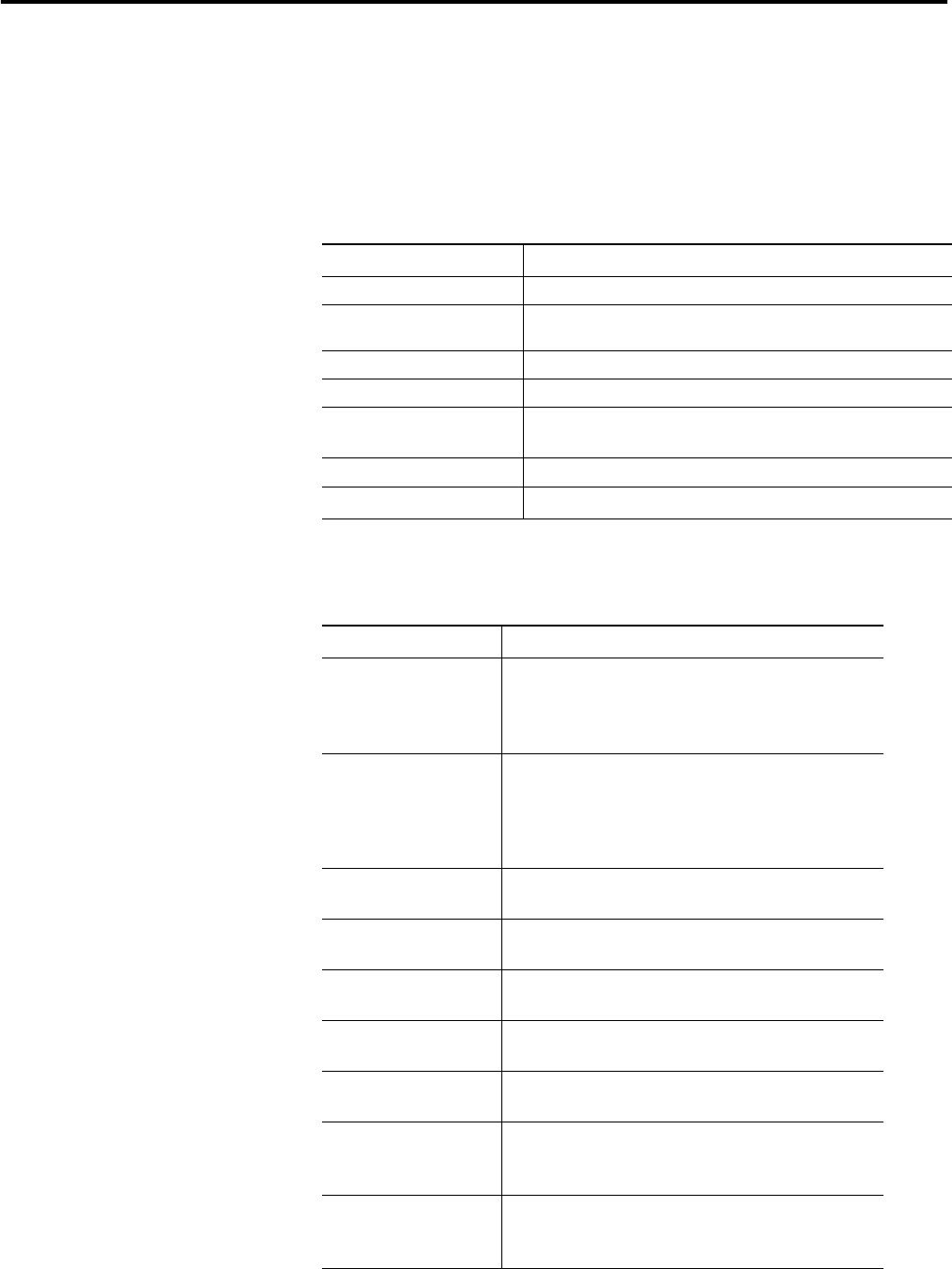User Manual
Table Of Contents
- 1756-UM532A-EN-P
- Important User Information
- Table of Contents
- Purpose of This Manual
- Preface
- 1756-DH485 Module Overview
- Overview of the DH-485 Network
- Introduction
- DH-485 Network Description
- DH-485 Network Protocol
- DH-485 Token Rotation
- DH-485 Network Initialization
- Devices that Use the DH-485 Network
- 1747-AIC Isolated Link Coupler for DH-485
- 1761-NET-AIC Advanced Interface Converter Product Overview
- Operating Modes
- Device Compatibility
- Misconception about the 1761-NET-AIC Converter
- 1747-UIC USB to DH-485 Interface Converter
- Example System Configuration
- Important Planning Considerations
- Additional Resources
- Use Data Highway 485 Network
- Use RSLinx Software to Create a Routing Table
- Communicate from an SLC 5/03 Controller to a Logix Controller over a DH-485 Network
- Communicate Between SLC Controllers over DH+ and DH485 Networks
- Communicate Between a PLC-5 Controller and a Remote SLC 5/03 Controller over Multiple DH-485 Networks
- Communicate from an SLC 5/05 Controller to an SLC 5/03 Controller over an EtherNet/IP Network
- Communicate to a SLC 5/03 Controller on a DH-485 Network
- Communicate from a Logix Controller to an SLC 5/03 Controller over EtherNet/IP and DH-485 Networks
- Specifications
- Troubleshoot the 1756-DH485 Module
- Index
- How Are We Doing?
- Rockwell Automation Support
- Backcover

1 Publication 1756-UM532A-EN-P - May 2006
Appendix
A
Specifications
ControlLogix DH-485 Communications Module 1756-DH485
Attribute Value
Module Location ControlLogix chassis
Maximum Backplane
Current Load
850 mA @ +5.1V dc and 1.7mA @ 24V dc
from I/O chassis backplane
Power Dissipation 4.5 W
Thermal Dissipation, Max 15.4 BTU/hr
Isolation Voltage 50V
Tested to withstand 750V dc for 60 s
Available Communication Rates 19.2 Kbps (default) and 9600 Kbps
Wiring Category
(1)
(1)
Use this Conductor Category information for planning conductor routing. Refer to Publication 1770-4.1, Industrial
Automation Wiring and Grounding Guidelines.
2 - on communications ports
Environmental Specifications
Attribute Value
Operational Temperature IEC 60068-2-1 (Test Ad, Operating Cold),
IEC 60068-2-2 (Test Bd, Operating Dry Heat),
IEC 60068-2-14 (Test Nb, Operating Thermal Shock):
0...60 °C (32...140 °F)
Storage Temperature IEC 60068-2-1 (Test Ab, Unpackaged Nonoperating Cold),
IEC 60068-2-2 (Test Bb, Unpackaged Nonoperating Dry Heat),
IEC 60068-2-14 (Test Na, Unpackaged Nonoperating Thermal
Shock):
-40...85 °C (-40...185 °F)
Relative Humidity IEC 60068-2-30 (Test Db, Unpackaged Nonoperating Damp Heat):
5...95% noncondensing
Vibration IEC 60068-2-6 (Test Fc, Operating):
2 g @ 10...500 Hz
Operating Shock IEC 60068-2-27 (Test Ea, Unpackaged Shock):
30 g
Non-operating Shock IEC 60068-2-27 (Test Ea, Unpackaged Shock):
50 g
Emissions CISPR 11:
Group 1, Class A
ESD Immunity IEC 61000-4-2:
4 kV contact discharges
8 kV air discharges
Radiated RF Immunity IEC 61000-4-3:
10 V/m with 1 kHz sine-wave 80%AM from 80...2000 MHz
10 V/m with 200 Hz 50% Pulse 100% AM at 900 Mhz










